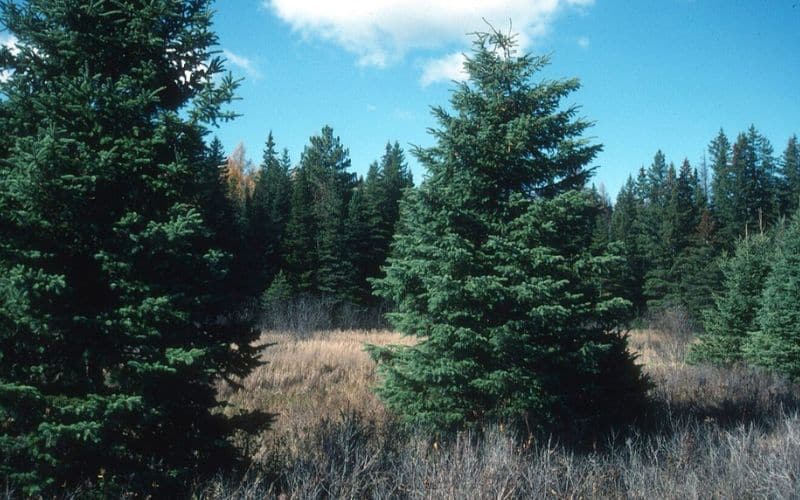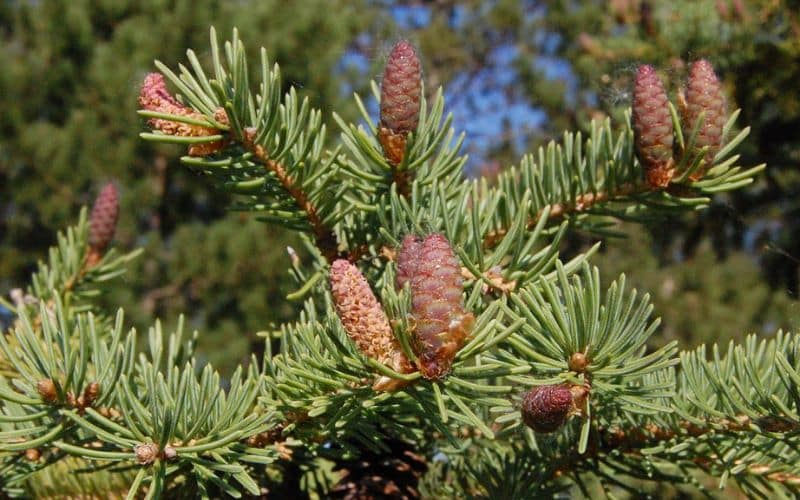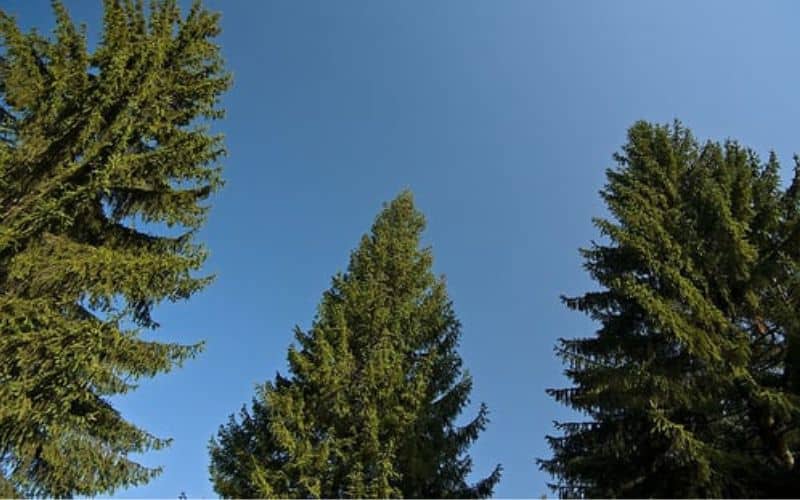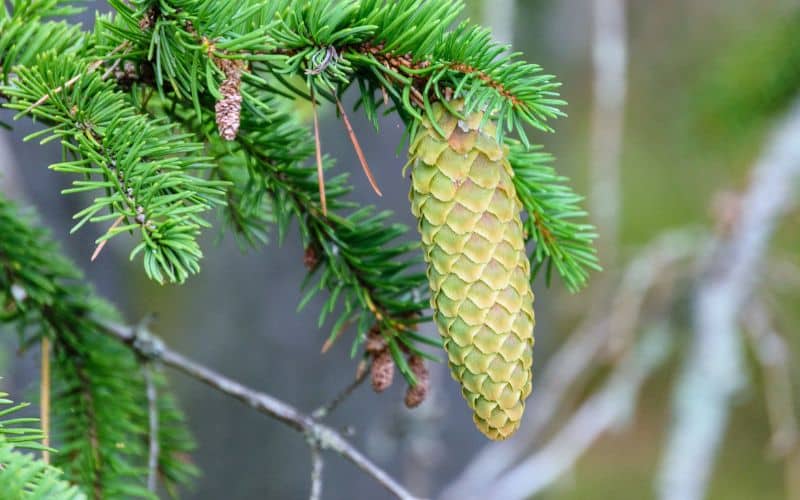
Why Choose White Spruce for Your Ontario Yard?
The White Spruce, or as the scientists like to call it, Picea glauca. This evergreen tree is a staple in Ontario’s lush landscapes, and it’s not just for show. Whether you’re a seasoned arborist or a green-thumbed newbie, this guide will walk you through everything you need to know about growing White Spruce in Ontario. From nurseries to container-grown options, we’ve got you covered. So, let’s get to it, shall we?
What Makes White Spruce (Picea glauca) Unique?
The White Spruce is a native evergreen that can grow up to 24 meters tall under ideal conditions. It’s a hardy tree that can tolerate a range of moisture levels and soil types. The needles are about 2 centimeters long and come in shades of bluish-green. But be cautious; young White Spruce trees are sensitive to frost damage, so they should be planted in a protected area.
Where in Ontario Does White Spruce Thrive?
The White Spruce is a true Ontarian at heart, flourishing in various parts of this diverse province. While it’s a common sight in northern regions, don’t be surprised to find it making cameo appearances in southern locales as well. In the north, it’s often part of the boreal forest, standing tall and proud even near the arctic tree line. But it’s not just a northerner; this tree has been successfully cultivated in urban areas and is a frequent sight in cities like Ottawa. So, whether you’re in the bustling capital or a tranquil northern town, the White Spruce is a versatile choice that feels right at home in Ontario’s varied climates and settings.

How to Identify a White Spruce Tree?
Spotting a White Spruce in the wild—or even in a well-manicured garden—isn’t as challenging as you might think, thanks to its distinct features. First off, it’s a coniferous tree, which means it bears cones. But not just any cones; these are slender beauties that measure between 5 to 7 cm in length. As they mature, they transition from a youthful green to a more subdued brown, making them a seasonal spectacle.
Now, let’s talk bark and needles. The bark of a White Spruce is more than just tree skin; it’s a telltale sign of its identity. Thin, scaly, and often grayish-brown, the bark is a dead giveaway if you’re trying to identify this tree.
As for the needles, they’re not just pointy; they’re four-sided and sharply pointed, making them unique in the spruce family. Their bluish-green hue adds a splash of color, making the tree easily identifiable even from a distance.
What Are the Ideal Soil Conditions for Growing White Spruce?
When it comes to soil, the White Spruce is a bit like Goldilocks—it likes conditions that are just right but is also forgiving if things aren’t perfect. Ideally, this tree thrives in well-drained, moist soil. That’s the sweet spot where you’ll see it flourish. But don’t fret if your yard doesn’t offer these exact conditions; the White Spruce is a flexible grower. It can adapt to a range of soil types, from sandy and loamy to heavier clay soils.
The key to success lies in moisture management. While the tree enjoys moist conditions, it doesn’t like to have “wet feet.” In other words, waterlogged soil is a no-go. If you’re planting in an area that tends to retain water, consider elevating the planting site or improving drainage to prevent root rot. A simple test to check your soil’s drainage is to dig a small hole, fill it with water, and see how long it takes to drain. If it takes longer than an hour, you may need to amend the soil or improve drainage.
How Fast Does White Spruce Grow?
If you’re the impatient type, you’ll be pleased to know that the White Spruce is relatively quick off the mark when it comes to growth. Under optimal conditions—think well-drained, moist soil and plenty of sunlight—you can expect this tree to shoot up by about 30 to 50 cm each year. That’s fast enough to provide noticeable changes but slow enough to allow you to enjoy the journey of watching your tree grow and mature.
However, it’s worth noting that several factors can influence the growth rate. Soil quality, moisture levels, and even the tree’s age can all play a role. Younger trees generally grow more quickly than older ones, and trees planted in rich, fertile soil will usually outpace those in less-than-ideal conditions. So, if you’re looking to maximize growth, pay attention to these variables. A well-fed and well-watered White Spruce is a fast-growing one.

What Varieties of White Spruce Are Available?
When it comes to spruce trees, the White Spruce is undoubtedly a star player, especially in Ontario. But did you know that it’s just one member of a larger spruce family? That’s right, the spruce world is a diverse one, offering a range of varieties that can suit different needs and aesthetic preferences.
The White Spruce itself comes in several cultivars, each with its own set of features. For instance, some cultivars are dwarf-sized, perfect for smaller spaces or as decorative elements in a garden. Others may have a bluish tint to their needles, adding a unique splash of color to your landscape.
Beyond the White Spruce, there are other spruce species worth considering. The Norway Spruce is known for its rapid growth and is often used for timber. The Blue Spruce, with its distinct bluish needles, is another popular choice for ornamental planting. The Serbian Spruce offers slender, arching branches and is well-suited for narrower spaces.
But let’s circle back to why the White Spruce holds its own among these varieties. Known for its broad, pyramidal shape, the White Spruce provides a classic evergreen silhouette that’s hard to beat. Its dense foliage offers excellent privacy and wind protection, making it as practical as it is beautiful.
How to Plant White Spruce: A Step-by-Step Guide
- Select the Right Spot: Choose a location with well-drained soil and adequate sunlight.
- Prepare the Soil: Loosen the soil and enrich it with organic matter if needed.
- Dig a Hole: The hole should be twice as wide as the root ball but no deeper.
- Place the Tree: Gently place the tree in the hole, making sure it is straight.
- Backfill: Fill the hole with soil, tamping it down as you go.
- Water: Give your newly planted spruce a good watering to settle the soil.
How to Care for Your Growing White Spruce
Taking care of a White Spruce is like nurturing a long-term friendship—it doesn’t demand constant attention, but a little TLC goes a long way. Regular watering is crucial, especially during those hot, dry spells that can leave your tree parched. But don’t just turn on the hose; make sure you’re watering deeply to encourage root growth.
When spring rolls around, consider applying a balanced fertilizer to give your tree a nutritional boost. This will help encourage new growth and keep your spruce looking its best. As for pruning, it’s not a must-do task for this low-maintenance tree. However, if you’re aiming for a particular shape or need to remove damaged branches, late winter to early spring is the best time to make those cuts.

Common Pests and Diseases: How to Protect Your White Spruce?
The challenges of parenthood—even plant parenthood. While the White Spruce is a hardy species, it’s not immune to the occasional health issue. Aphids and spider mites are the usual suspects when it comes to pests. These tiny critters can suck the life out of your tree if left unchecked.
On the disease front, needle cast and rust are the most common culprits. Needle cast can cause your spruce to lose its needles, while rust can lead to unsightly yellow or orange spots.
So, what’s a concerned tree parent to do? First, make regular inspections a part of your routine. Check the needles, bark, and cones for any signs of infestation or disease. If you spot something amiss, act promptly. Insecticidal soaps or horticultural oils can deal with most pests, while fungicides are effective for treating diseases.
Conclusion: Why White Spruce is the Perfect Addition to Your Ontario Landscape
Whether you’re planting a single tree or an entire forest, the White Spruce is a fantastic choice for any Ontario yard. Its resilience and beauty make it a favorite among both novice and experienced gardeners. So go ahead, add a touch of evergreen to your life!








